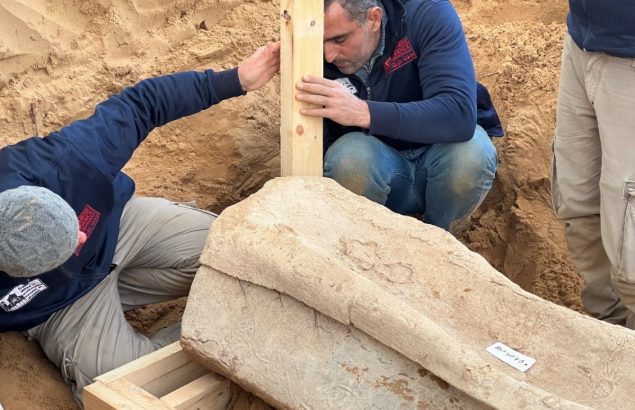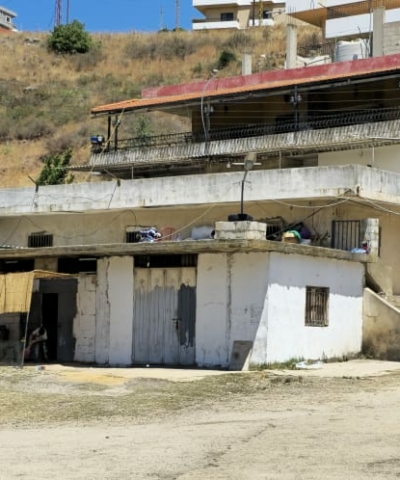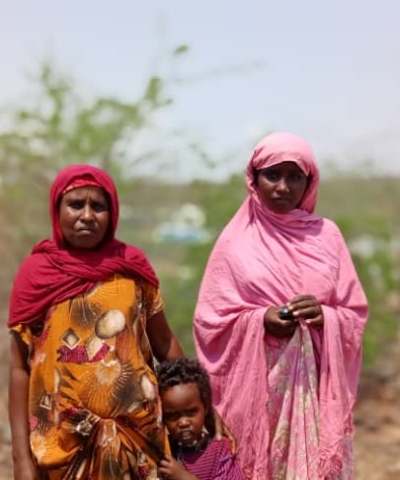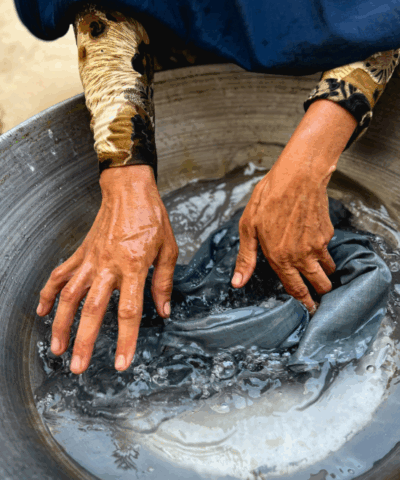News
Discovery of a leaden sarcophagus in Gaza
Publié le 02/03/2023 | Temps de lecture : 2 min

Première Urgence Internationale teams made an incredible discovery during a preventive archaeological excavation in Jabalyah, in the north of the Gaza Strip.

Construction of the protective chest of the sarcophagus ©Première Urgence Internationale / 2023
Located along the coast 500 metres from the sea, the Roman necropolis of Ard-al-Moharbeen (2nd-3rd centuries AD) has no less than 85 individual and collective tombs discovered so far. Among them, a lead sarcophagus has remained sealed and closed in an exceptional state of preservation. An operation to extract the sarcophagus was organised by the Première Urgence Internationale teams under the scientific supervision of the French Ecole Biblique et Archéologique (EBAF). This discovery is a priceless heritage that will give indications on burial methods and funeral rituals in Roman times. A wooden casing was built in situ to protect the sarcophagus when it was moved and then entrusted to a team of experts in ancient funerary anthropology.
Cultural heritage is a tool for socio-economic development for young people in Gaza
The discovery of the sarcophagus is part of the INTIQAL 2030 programme run by Première Urgence Internationale, funded by the British Council’s Cultural Protection Fund and in partnership with the Palestinian Department for Digital, Culture, Media and Sport.
Thanks to this programme, students and young graduates in archaeology will be able to reinforce their knowledge of conservation techniques. It is also an opportunity for the younger generation to showcase the richness of Palestinian cultural heritage.
This is something to feed our curiosity and motivate us to follow the results of scientific research. Who could be in this sarcophagus?



